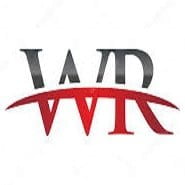-

-
Wikirise.com Advertise with Us HereStats: 4,783 members, 41,616 Posts
Number of Comments : 2,630
Date: Sunday, 22nd December 2024
Airlines rally governments behind safe rollout of 5G networks
By Godwin Emmanuel - June 24, 2022 | Categories: Business Tags: Travel
Share this post:

World airlines have urged governments to work closely with the aviation industry to ensure that aviation and incumbent aviation safety systems can safely co-exist with new 5G services.
The operators, under the aegis of the International Air Transport Association (IATA), said that only a coordinated approach would safeguard risks to airlines’ operations.
Air travel went chaotic early this year as some foreign airlines withdrew flight services into the United States citing safety concerns over 5G rollout. Regulators and operators are worried that 5G cellular antennas near some airports — not air travellers’ mobile devices — could throw off readings from some aircraft equipment designed to tell pilots how far they are from the ground.
Operators, therefore, urged governments to work closely with the aviation industry to ensure that aviation and incumbent aviation safety systems could safely co-exist with new 5G services.
While IATA recognises the economic importance of making spectrum available to support next generation commercial wireless telecommunications, maintaining current levels of safety of passengers, flight crews, and aircraft must continue to be one of governments’ highest priorities.
IATA’s Director General, Willie Walsh, said the industry must avoid a repeat of the recent experience in the United States.
“In fact, many countries have successfully managed to facilitate the requirements of 5G service providers, while including necessary mitigations to preserve aviation safety and uninterrupted services. These include, for example, Brazil, Canada, France and Thailand,” Walsh said.
Before deciding on any spectrum allocations or conducting spectrum auctions, IATA called for governments to ensure close coordination and mutual understandings between national spectrum and aviation safety regulators so that each frequency allocation/assignment is comprehensively studied and is proven not to adversely impact aviation safety and efficiency. Robust testing in coordination with aviation subject matter experts is critically important in providing necessary information.
Measures that have already been used by some governments include: ensure thorough testing, sufficient spectrum separation between 5G C-band deployments and 4.2-4.4 GHz frequency band used by existing radio altimeters.
Other measures include, clearly codify and enforce the maximum power limit for 5G C-band transmission and downward tilting of 5G antennae particularly in the vicinity of flight paths. Establishment of sufficient 5G C-band prohibition and precautionary zones around airports.
IATA noted that airlines operating to/from and within the U.S. continue to contend with the effects of the rollout of 5G, including a pending airworthiness directive from the Federal Aviation Administration (FAA) requiring them to retrofit/upgrade radio altimeters at their own expense to enable the respective aircraft to continue to utilize CAT II and CAT III low-visibility approaches at many U.S. airports where 5G C-Band service is currently or will be deployed in future.
The timely availability of upgraded altimeters is a concern, as are the cost of these investments and the lack of certainty regarding the future spectrum environment. Furthermore, 19 additional telecommunications companies are scheduled to deploy 5G networks by December 2023.
“FAA’s unilateral decision to require airlines to replace or upgrade their existing radio altimeters – which are approved by both the FAA and the U.S. Federal Communications Commission – by July 2023 is deeply disappointing and unrealistic. The FAA has not even approved or certified all the safety solutions that it will require, nor have systems providers been able to say with certainty when the equipment will be available for much of the fleet. So how can there be any confidence in the timeline?
“Furthermore, the FAA can provide no guarantee that airlines will not have to carry out further upgrades to radio altimeters as even more powerful 5G networks are deployed in the near future. Safety is our highest priority, but it cannot be achieved with this rushed approach. The FAA needs to continue working with all stakeholders collaboratively and transparently, including the FCC and the telecom sector, to define solutions and deadlines that reflect reality,” Walsh said.